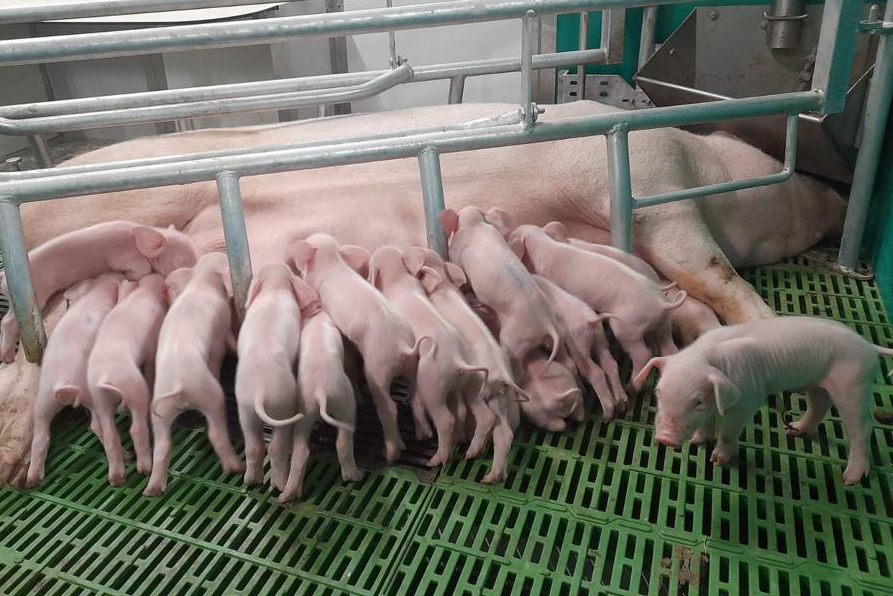– PIC Damline genetic update –
Pig production remains challenging
Pig production is subject to continuous changes and farmers are constantly facing new challenges.
Climate change, new animal husbandry regulations to improve animal welfare, reduction of antibiotic use, ban on the use of zinc oxide for therapeutic purposes are the most discussed topics in Europe.
In summary, the underlying theme is related to increased robustness. Noting this clear trend, pig farmers must trust their genetic provider to adapt the breeding programme accordingly and, if possible, to provide the sow for the future today.
Novel traits and genetic improvement are part of the solution
PIC as the leading genetic partner seeks to be ever aligned to the various challenges that producers face in an industry of constant evolution.
Pig farmers need a more robust sow that can cope well with the changing conditions while continuing to perform exceptionally well and efficiently.
Key factors:
Maternal GNX Programme and redefining weightings in the index
To further deliver on market needs, in June 2022 PIC included in its genetic program the new trait Sow Robustness, an innovative approach that accelerates the genetic progress in this key trait related to longevity in maternal lines.
PIC developed a new Maternal GNX Programme focused on reduction of sow mortality and non-productive days.
During the last two years, phenotypic and genomic data were collected from thousands of pure and crossbred sows reared in commercial conditions to further redefine sow longevity into four buckets, see figure 1.
PIC’s GNX-Programme
- GNX stands for Genetic Nucleus Cross(X)bred-Programme
- Use of elite boars first in commercial farms to produce ‘commercial’ pigs and somewhat later for pure matings at the highest genetic level to produce the next generation of elite animals.
- Performance data of the commercial pigs are available at the same time as the off-test of the purebred progeny and increase the accuracy of the index.
- Allows to improve traits that cannot be measured in nucleus farms.
- Ca. 200,000 animals tested every year.

The novel utilization of large amounts of high-quality data from monitored farms and updated risk modelling using genomic information in our new Maternal GNX data flow result in the calculation of Estimated Breeding Values (EBVs) of the new robustness trait. These EBVs now form part of the maternal indexes that deliver ongoing value for our customers.
This new trait will lead to optimised productive life of commercial sows under a wide range of environmental conditions.

However, the new sow robustness trait is not the only component we are using to further improve the overall robustness of our maternal genetics. We continue to follow our approach of always looking at the whole system and have increased the relative weighting of traits such as teats and milking capacity. At the same time, the ongoing focus on piglet birth weight, congenital defects and pre-weaning mortality remains high, see figure 2. Everything combined will result in increased delivery of tangible genetic gain into the future to combine with the gains we have already delivered to date, see figure 3.

Enhanced objectivity and accuracy through the latest technologies and artificial intelligence
Technical advancements together with artificial intelligence make it possible to further objectify and automate data collection. We are currently working on the final implementation of video-based phenotyping of feet and legs, targeted to enter into the index before the end of this calendar year.
The combination of the new sow robustness trait and the improvement of the technology applied to the leg score will represent a milestone in PIC’s breeding programme applied to maternal lines.
PIC is conscious about the role that genetics play in the future of pig producers’ success.
“Never Stop Improving” is our main driver. That is why we will continue investing, innovating, and implementing applied research which can have a significant impact on genetic progress, resulting in a portfolio of sows and services that meet pig producer needs for today and the future.




